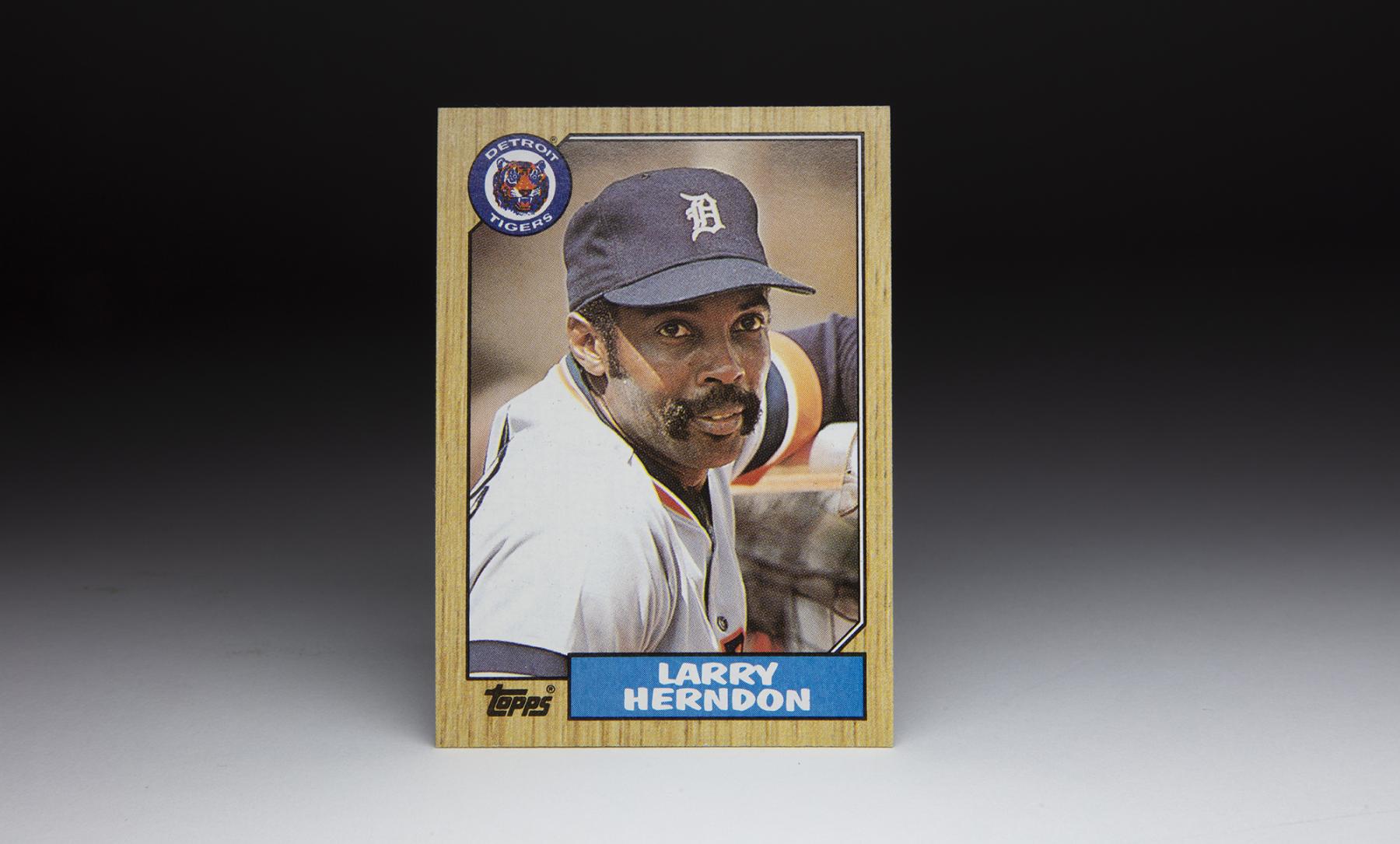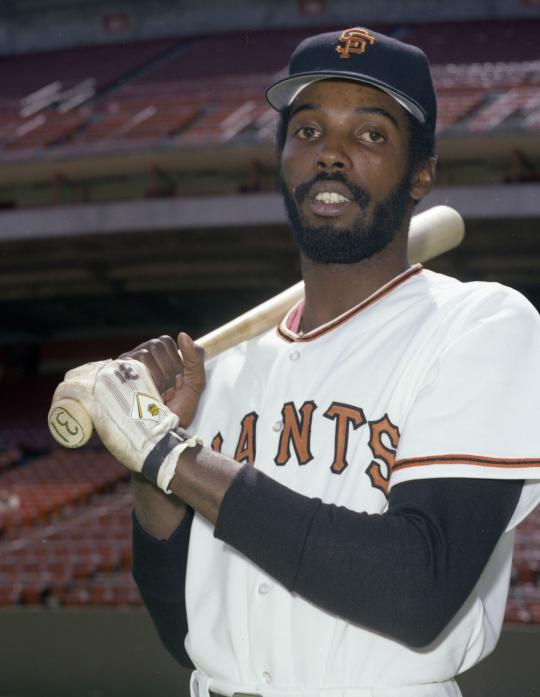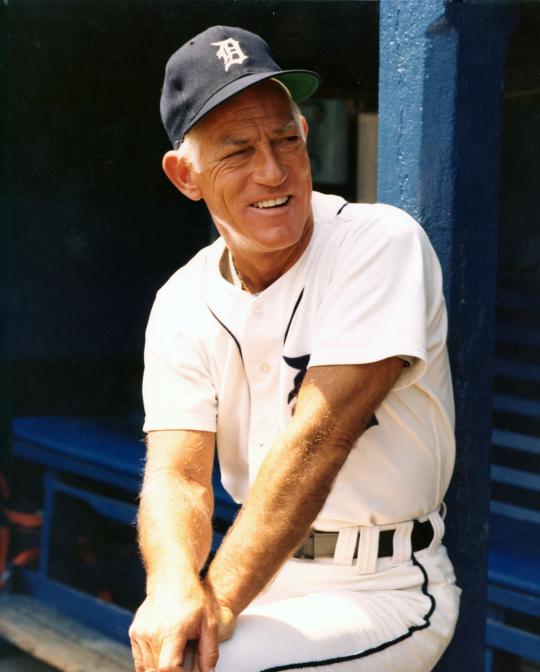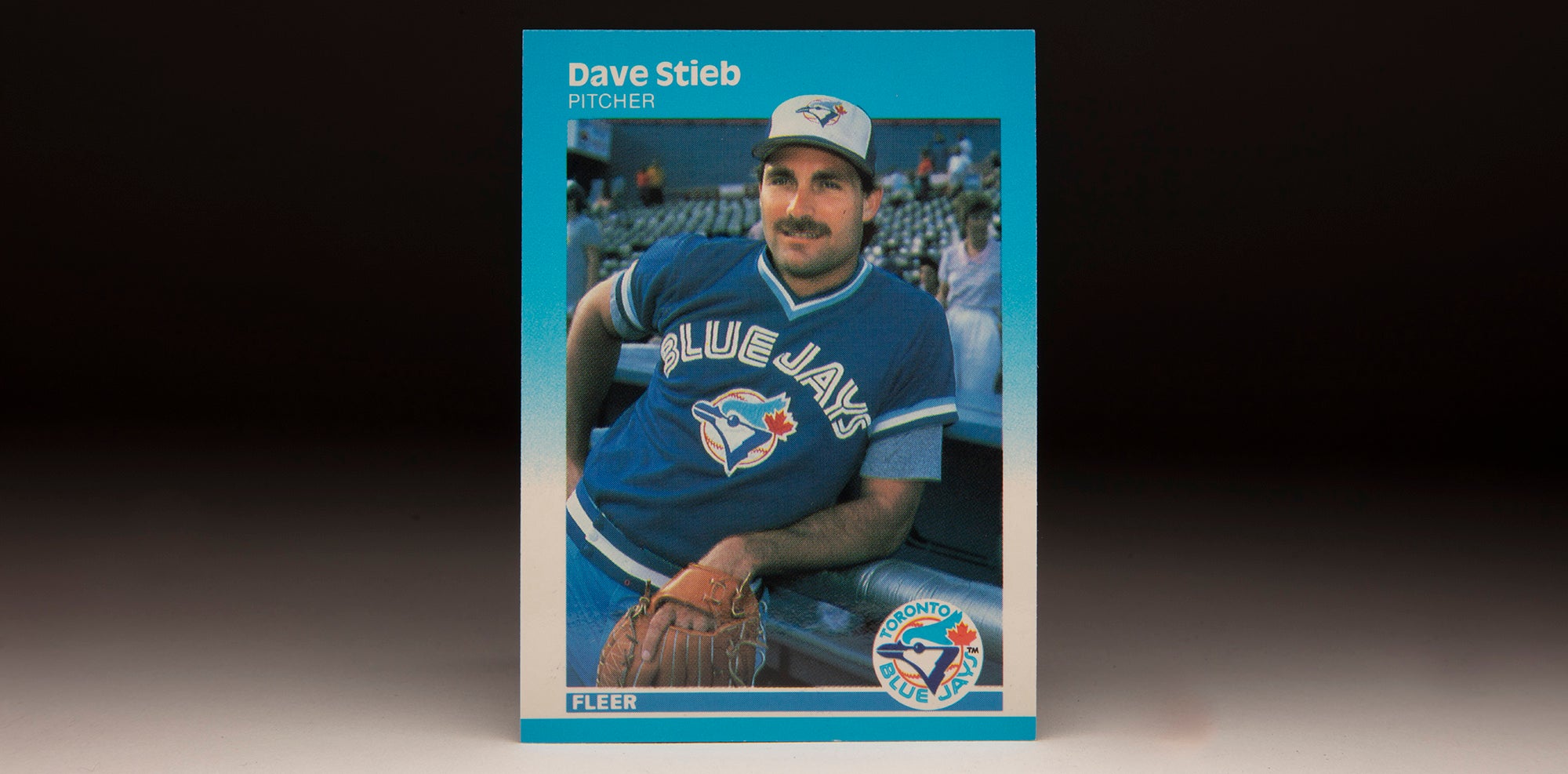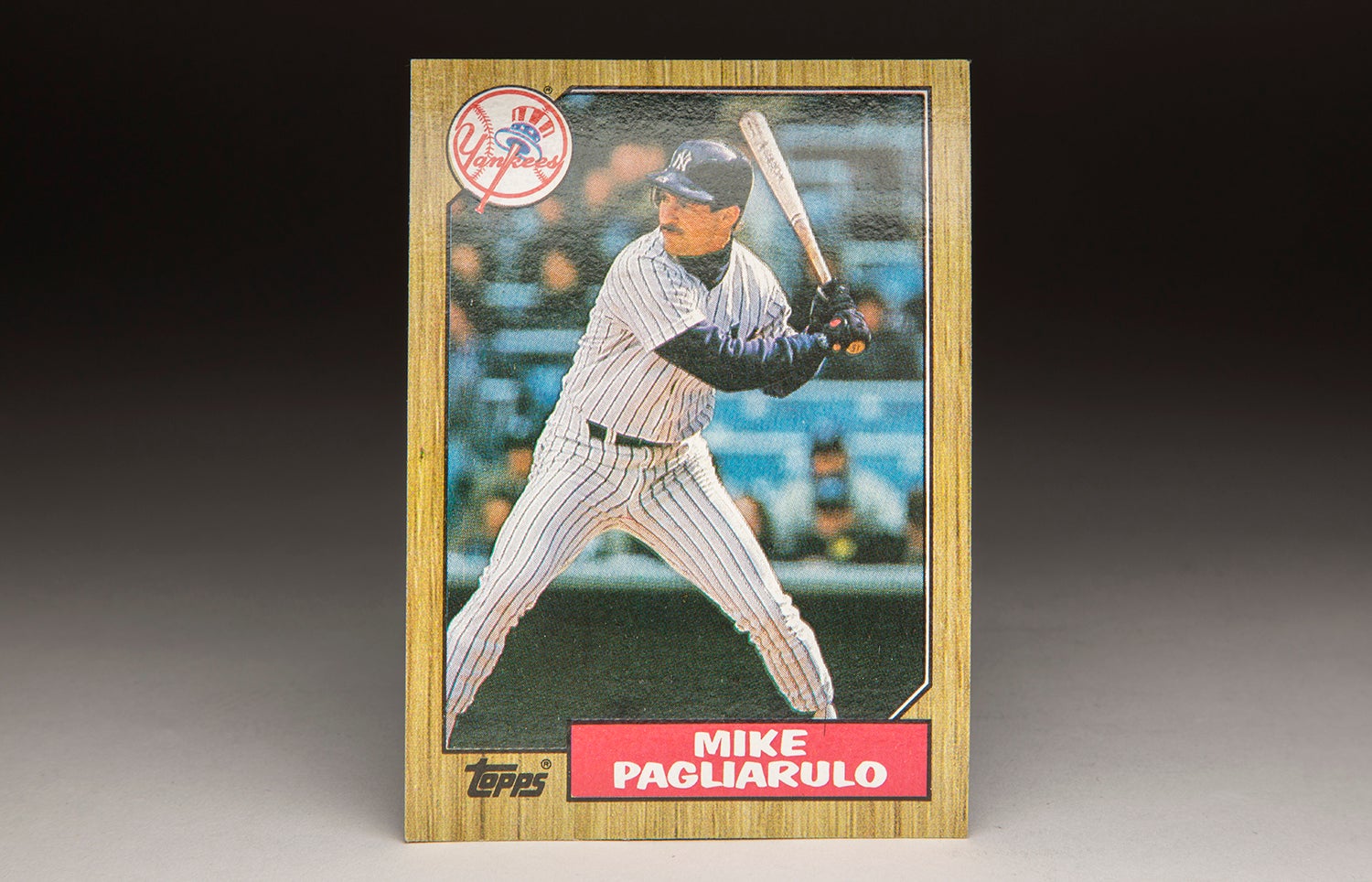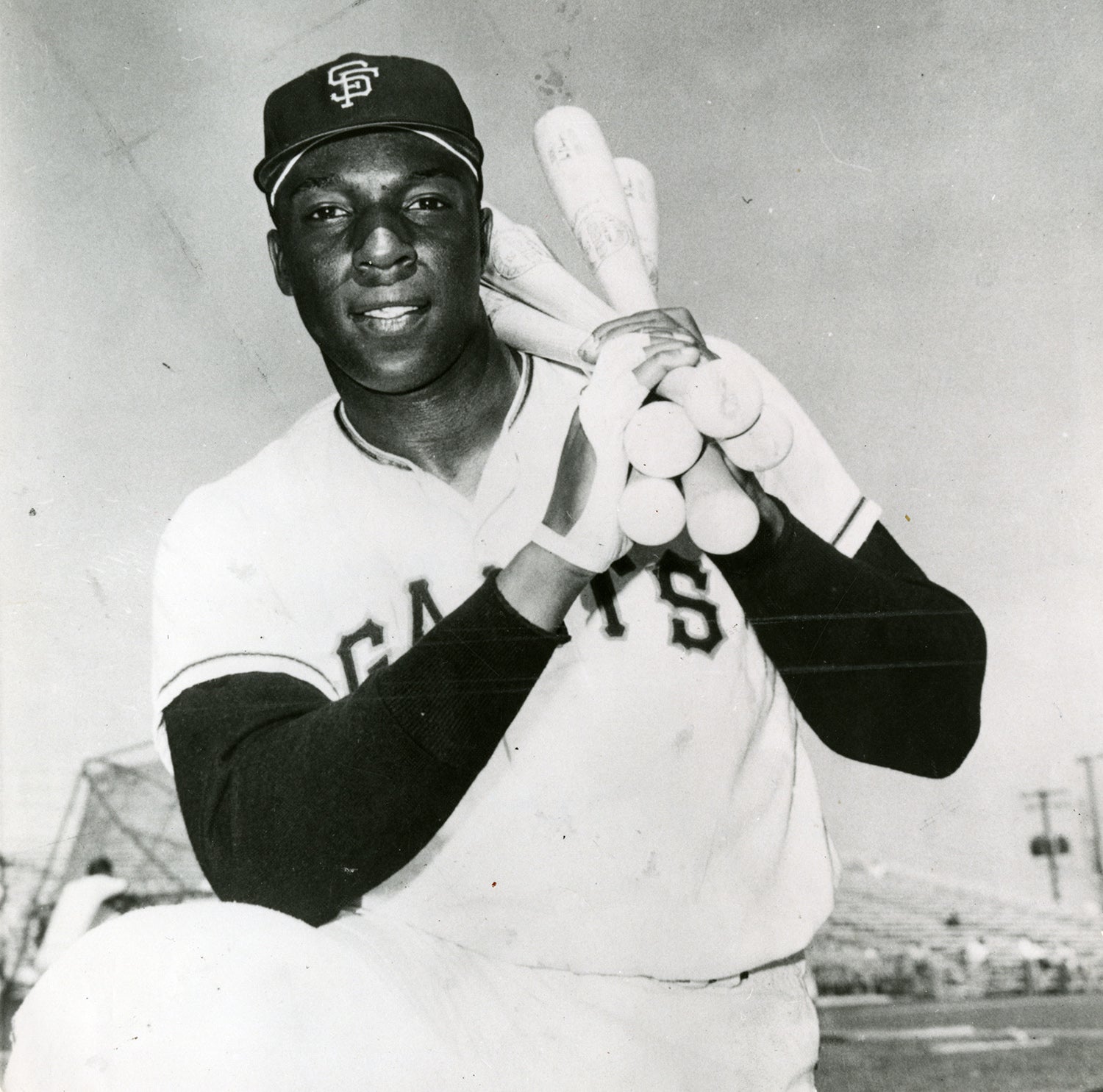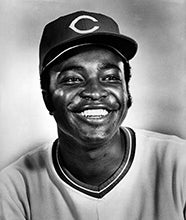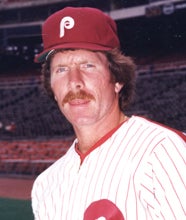- Home
- Our Stories
- #CardCorner: 1987 Topps Larry Herndon
#CardCorner: 1987 Topps Larry Herndon
Sparky Anderson was given to hyperbole – and certainly never had difficulty finding something positive to say about his players.
But it’s difficult to overestimate Anderson’s take on his longtime Tigers outfielder Larry Herndon:
“I think there are few people like Larry Herndon who cannot be a better person than they are,” Anderson told the Detroit Free Press in 1987. “Larry Herndon is special to me and always will be.
“I have always said that I’ve never met a finer person than Larry Herndon.”
Many agreed with the Hall of Fame manager, who had the pleasure of writing Herndon’s name onto his lineup card for seven of Herndon’s 14 big league seasons.
Born Nov. 3, 1953, in Sunflower, Miss., Herndon grew up in Memphis in a close-knit family. An all-around athlete who excelled at football and track as well as baseball at Douglass High School, Herndon was selected in the third round of the 1971 MLB Draft by the Cardinals – one round after future Hall of Famers George Brett and Mike Schmidt.
Hall of Fame Membership
There is no simpler, and more essential, way to demonstrate your support than to sign on as a Museum Member.
Be A Part of Something Greater
There are a few ways our supporters stay involved, from membership and mission support to golf and donor experiences. The greatest moments in baseball history can’t be preserved without your help. Join us today.
The Cardinals sent Herndon to their Gulf Coast League affiliate, where he hit .239 in 40 games. After bouncing through three teams in 1972, Herndon established himself as a prospect in 1973, hitting .287 with 41 stolen bases and 83 runs scored in 141 games for Class A St. Petersburg. Playing on a talented team that featured future big leaguers like Jerry Mumphrey, Mike Proly and John Tamargo, Herndon helped St. Petersburg win the Florida State League title.
“We felt like we were never going to lose,” Herndon told the Tampa Bay Times after the Cardinals swept the West Palm Beach Expos 2-games-to-none in the FSL championship series. “Everybody on the club felt that way. Nobody on our club was tight, because we knew we were going to win.”
The Cardinals promoted Herndon to Double-A Arkansas of the Texas League in 1974, and he hit .285 with 50 steals in 132 games, earning a late-season promotion to the big leagues. At 20 years of age, Herndon debuted with the Cardinals as a pinch runner on Sept. 4, appearing in 11 games in that role. He came to bat only once, reaching on an infield hit off the Cubs’ Tom Dettore on Sept. 21 in a 19-4 Chicago win at Busch Stadium.
The Cardinals sent Herndon to Triple-A Tulsa to begin the 1975 season, and he was hitting .240 with 12 steals in 22 games for the Oilers when he was traded to the Giants along with fellow minor leaguer Tony Gonzalez in exchange for former 20-game winner Ron Bryant, who was still trying to recover from a swimming pool accident a year earlier.
Bryant pitched just 8.2 innings over 10 games with the Cardinals in 1975 before his career came to an end. Herndon, meanwhile, hit .269 with 17 steals in 115 games for Triple-A Phoenix.
“Oh, I wanted to play for St. Louis, because I’m from Memphis and the whole town loves the Cardinals,” Herndon told the San Francisco Examiner. “And my hero was Lou Brock. I wanted to be just like him when I was a kid.
“I’d been such a Cardinals fan all my life. The Giants were in another world. But I’m glad I’m here.”
Herndon returned to Phoenix to start the 1976 season, with Von Joshua in center field for the Giants after hitting .318 in 1975. But Joshua had trouble with the defensive part of his duties early in the 1976 season, leading Giants manager Bill Rigney – who liked what he saw from Herndon in Spring Training – to bring Herndon to the majors in May. By early June, Joshua’s contract had been sold to the Milwaukee Brewers, leaving Herndon with the center field job.
“I had this bad hitch in my swing,” Herndon told the San Francisco Examiner. “I can understand why they weren’t anxious to give me the job directly. But it was something I had been working on. Lou Brock helped me when I with the Cardinal organization and Hank Sauer gave me good advice last year in the (Pacific Coast League).”
Herndon proved he could handle big league pitching, hitting .288 as a rookie in 1976 with 42 runs scored in 115 games.
“This kid has the finest attitude I’ve seen toward (the) game in a long time,” Rigney said. “I honestly don’t know how good he is, but I love what I’ve seen so far. When we put him in center field, this club got going. He just plain hustles.”
But with a regular job all but assured in 1977, Herndon reinjured his knee in Spring Training – the same knee that he had surgically repaired following the 1976 campaign.
He began the season on the active roster but was often unable to start on consecutive days due to the pain. Finally, after appearing in 49 games through June 18 and hitting just .239, Herndon once again underwent surgery on the knee.
Then in late August, Herndon left the team over a dispute on when he would be reinstated to the active roster.
“We planned to activate him Sept. 1 when the rosters can be expanded,” Giants manager Joe Altobelli told the San Francisco Examiner. “It wouldn’t have made sense to rush him. There are so many ways he could get hurt if the knee wasn’t 100 percent. If I played him and he did get hurt, I’d feel like the village idiot.”
Healthy again in 1978, Herndon appeared in 151 games and hit .259 with 13 stolen bases as the Giants’ regular center fielder. But he struggled with strike-zone recognition and hit .257 in 1979 and .258 in 1980 while slugging just .367 over 422 games from 1978-80.
The Giants, however, we hesitant to give up on a premium athlete like Herndon after letting other young outfielders like George Foster, Garry Maddox and Gary Mathews get away before they reached their potential.
“Larry has the ability to hit 30 homers and steal 30 bases,” Altobelli said in January of 1979.
But Herndon remained unable to put together a full season of excellence.
“You can’t blame him,” Willie McCovey told the Oakland Tribune about Herndon in 1979, pointing out that at that time hitting coach Hank Sauer didn’t even travel with the club on the road nor sit on the bench during home games. “He’s done great considering how they’ve used him.”
But in 1981, Herndon assembled the best two-month stretch of his career to start the season, hitting .354 as late as May 22 before a slump dropped his average to .300 when the strike interrupted the season in June.
He finished the season hitting .288 with 15 stolen bases and a .415 slugging percentage in 96 games.
Then on Dec. 9, the Giants – who had explored trading Herndon for pitchers like Ken Forsch and Joaquín Andújar at differing points in 1981 – dealt Herndon to the Tigers in exchange for pitchers Mike Chris and Dan Schatzeder.
It was the break Herndon had needed.
“Larry was our MVP this year, so you know what the guys thought about him,” the Giants’ Darrell Evans, who would join Herndon in Detroit in 1984, told the Detroit Free Press following the trade. “I think he was among the top outfielders in the league, a guy who was just coming into his own.”
Herndon made the Tigers look good in 1982 when he got off to a torrid start, including tying a big league record with home runs in four straight plate appearances over two games May 16 and 18. In the May 18 contest, Herndon homered in his first three times at-bat – all off Athletics pitcher Mike Norris.
Herndon had never hit more than eight home runs in one big league season prior to 1982. But his work with Tigers hitting coach Gates Brown released his untapped power.
“You never know anything, but I talked all winter to Joe Morgan and he said: ‘Man, you’ve got yourself a ball player,” Anderson told the Associated Press after Herndon’s power outburst. “That’s all I needed to hear.”
Herndon finished the 1982 campaign with a .292 batting average, 23 home runs, 88 RBI and 92 runs scored. Following the season, he eschewed the free agent market and signed a four-year deal with Detroit worth a reported $2.7 million.
“It’s a winning atmosphere here, the kind of atmosphere any player wants to be in,” Herndon told the Detroit Free Press. “My main concern is winning.”
The Tigers improved from 83 wins in 1982 to 92 a year later as Herndon hit .302 with 20 homers, 92 RBI and 88 runs scored. Then in 1984, the Tigers began the season 35-5 as Anderson pushed all the right buttons while rotating a variety of players through the lineup. Now 30, Herndon hit .280 with seven homers and 43 RBI in 125 games.
But the Tigers coasted to the AL East title, and Herndon started two games in the ALCS as Detroit swept Kansas City. His fourth-inning home run in Game 1 increased the Tigers’ lead to 3-0 in a contest they won 8-1.
Then in Game 1 of the World Series, Herndon’s two-run, fifth-inning homer turned a 2-1 San Diego advantage into a 3-2 Detroit lead. Neither team scored again as Jack Morris hurled a complete game, launching the Tigers to what would become a five-game Fall Classic victory.
Herndon batted .333 with three walks and three RBI – and caught Tony Gwynn’s fly ball for the final out of Game 5.
Heading into the 1985 season, Herndon reclaimed his starting job in left field when Ruppert Jones – who had cut into Herndon’s playing time after arriving in Detroit a week into the 1984 season – left the team as a free agent. His right knee, which bothered him throughout the 1983 and 1984 campaigns and eventually led to arthroscopic surgery, had finally healed.
“I’m going into the season with much more confidence,” Herndon told United Press International in Spring Training of 1985.
But the Tigers were unable to recapture the magic of 1984 – and nagging injuries began slowing down Herndon, who hit .244 with 12 homers and 37 RBI in 137 games in 1985. Herndon hit .433 in Spring Training in 1986, but Anderson remained committed to a platoon system that saw the right-handed hitting Herndon sitting against most right-handed pitchers.
“Larry Herndon can help this ball club,” Anderson told the Associated Press. “He didn’t put up those (1982-83) numbers by mistake.”
But Herndon appeared in just 106 games that year, hitting .247 with eight homers and 37 RBI. The Tigers brought him back in 1987 at a salary about one third of what his four-year deal had paid him.
Detroit began the 1987 season 11-19 – Herndon’s titanic home run on Opening Day, which reached the second deck in center field at Tiger Stadium and traveled in excess of 460 feet, was one of few highlights – and found themselves trailing the first-place Yankees by six games on May 31. But New York cooled as the summer progressed and Toronto got hot, leaving Detroit three-and-a-half games behind the Blue Jays with eight games remaining.
By dawn of the season’s final day, Detroit had defeated Toronto in the first two games of a three-game set to take a one-game lead in the AL East. With lefty Jimmy Key on the mound for the Blue Jays, Anderson penciled Herndon’s name into the starting lineup in right field.
In the bottom of the second inning, Herndon took Key deep to left field to give Detroit a 1-0 advantage. It would be the only run scored that day, sending the Tigers to the ALCS.
“What can I say? What can I tell you? We won,” Herndon told the Detroit Free Press after politely refusing interviews all season. “Luckily, I got just enough. I saw (Toronto left fielder George) Bell go back and it looked like he had a chance to catch it.
“I never pressed this year. I knew what I had to do, how I had to come back. And everything just turned out good. That’s why this is so much sweeter than in ’84. We worked so much harder to get here.”
For the season, Herndon hit .324 with nine homers and 47 RBI in 89 games. He hit .333 with two RBI in three games in the ALCS, but the Twins won the series 4-games-to-1 to end the Tigers’ season.
The Tigers brought Herndon back again in 1988, but he struggled to a .224 average with four homers and 20 RBI in 76 games. He signed with the Athletics for the 1989 season, but his lingering knee problems convinced Herndon he could no longer play. On March 8, he informed A’s manager Tony La Russa that he was retiring.
Anderson brought Herndon back to the Tigers in 1992 as the team’s hitting coach, and he remained with the team through 1998 as Buddy Bell took over as manager. He then spent many years as a hitting coach in Detroit’s minor league system.
In 14 big league seasons, Herndon totaled 107 home runs and 550 RBI to go with 1,334 hits and a .274 batting average.
“My idea of a good time is me and my (children) in the park, with the sun shining,” Herndon told the Associated Press. “They mean a lot to me. They’re what make me go.”
Craig Muder is the director of communications for the National Baseball Hall of Fame and Museum

